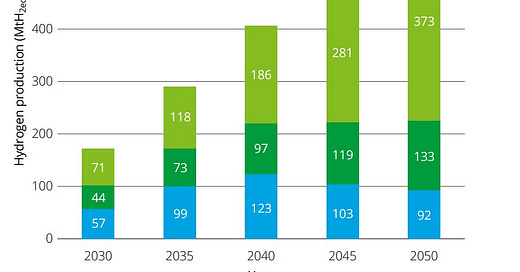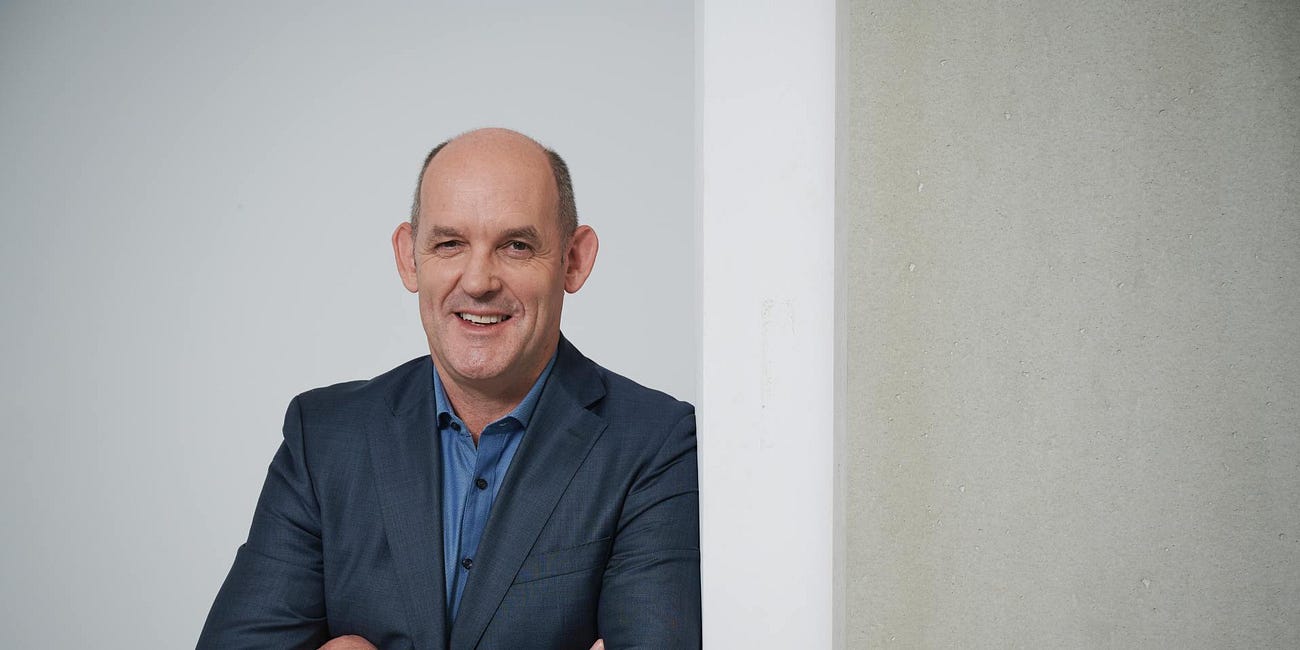Change of Directions Newsletter 14.06.2023
Green hydrogen is growing fast and will dominate the market by 2050. And a new technology allows hydrogen to be stored in iron steel. This and more news is in our newsletter of the week.
Green hydrogen is expected to make up 85% of the market by 2050, the “Green Hydrogen: Energizing the Path To Net Zero” report forecasts. The demand for clean hydrogen in industries like iron, steel, and others is projected to top 250 MtH2eq, representing 42% of the total demand. As climate change becomes a global imperative, clean hydrogen demand will “likely skyrocket around the world.” By 2050, when the international hydrogen market reaches maturity, global trade between major regions can potentially generate over $280 billion in annual export revenues. Notably, regions such as North Africa ($110 billion per year), North America ($63 billion), Australia ($39 billion), and the Middle East ($20 billion) are anticipated to emerge as some of the largest markets in the industry.
https://www.deloitte.com/global/en/issues/climate/green-hydrogen.html
An important question for the future revolves around whether hydrogen can effectively deliver on its promise of sustainably reducing global CO2 emissions. However, it is crucial to acknowledge that unburned hydrogen, when released into the atmosphere, can contribute to rising atmospheric temperatures. A recent study from Norway highlights this effect, particularly in cases where hydrogen escapes from leaking pipelines or during processing. As hydrogen production continues to grow, it is reasonable to expect potential environmental consequences. Nonetheless, manufacturers emphasize that the unintentional release of hydrogen causes less harm compared to the release of CO2. Furthermore, future pipelines are expected to incorporate improved technologies that surpass current standards, mitigating these concerns.
https://www.h2-view.com/story/cicero-study-industry-responds-to-hydrogen-emissions-claim/
The problem described above is mainly due to the fact that hydrogen has so far been transported in either gaseous or liquid form, which carries the risk of accidental leaks. However, various companies are actively developing alternative solutions for hydrogen transportation. For instance, a Dutch student team has devised a steam-iron process wherein iron, when exposed to high-pressure hot steam, reacts with water molecules to produce hydrogen and iron oxide (rust). Hydrogen can be extracted and utilized as an energy source, while the remaining iron oxide can be regenerated back into iron with the addition of hydrogen. In this way, the iron functions as a circular hydrogen carrier. https://www.hydrogenfuelnews.com/hydrogen-storage-solid/8559047/
Just a few months into a joint project, experts from Bosch Engineering and Ligier Automotive have built a high-performance vehicle with a hydrogen engine. The demonstrator is based on the Ligier JS2 R race car, which was modified for hydrogen operation. With this vehicle, both companies demonstrate the potential that alternative, climate-friendly drive systems have for high-performance applications such as motorsports. The vehicle features a V6 hydrogen engine and a carbon monocoque that integrates three 700-bar type IV hydrogen cylinders from Hexagon Purus. The 3.0-liter biturbo charged V6 engine already has an output of 420 kilowatts and will be optimized even further in the coming weeks.
https://www.bosch-presse.de/pressportal/de/en/bosch-engineering-and-ligier-automotive-present-high-performance-vehicle-with-a-hydrogen-engine-at-24h-race-in-le-mans-255104.html
Uruguayan President Luis Lacalle Pou has announced that construction will begin next year on a $4bn, 1GW green hydrogen and e-fuels project in the South American country. The 1GW electrolyser, plus the CO2 capture and synthetic gasoline facilities, will cost a total of $2bn, while another 2GW of wind and solar power, including transmission lines, will cost a further $2bn. This was shared with the public by Energy Minister Omar Paganini during a press conference held in the city of Paysandú.
https://www.hydrogeninsight.com/production/construction-of-4bn-1gw-green-hydrogen-and-e-fuels-project-due-to-begin-in-uruguay-next-year/2-1-1465091
In Tokyo, a Japanese consortium is currently conducting tests on a 100 kW fuel cell system. This system utilizes both green hydrogen and hydrogen derived from waste plastic to provide heat to an industrial building. The primary goal of this demonstration is to establish a model for urban hydrogen energy utilization that combines hydrogen sources from both global and local origins. The new system is designed for commercial and industrial applications and has a capacity of 100 kW. It is currently being tested at the Tokyo Tech Environmental Energy Innovation (EEI) Building, where it receives green hydrogen from a PV system and storage racks for hydrogen generated from waste plastic.
https://www.pv-magazine.com/2023/05/29/japanese-group-unveils-fuel-cell-system-based-on-green-hydrogen-waste-plastic/
In case you missed it: Hyundai is one of the biggest investors in a hydrogen economy. In our podcast, Michael Cole explains how the company sees the future of hydrogen.
Change of Directions Podcast with Michael Cole, President, and CEO of Hyundai Europe
Listen now (16 min) | Hyundai has recently unveiled its ambitious Hydrogen Strategy. The strategy is focused on accelerating the development of a hydrogen society by leveraging Hyundai's technological capabilities and industry partnerships. Hyundai Europe CEO Michael Cole has been a key driving force behind the company's hydrogen strategy. Cole has been with Hyundai for over …
That was it for this week. Thank you for subscribing to the Change Of Directions newsletter! If you have any questions or if you want to share an interesting link, feel free to contact us: contact@changeofdirections.com






